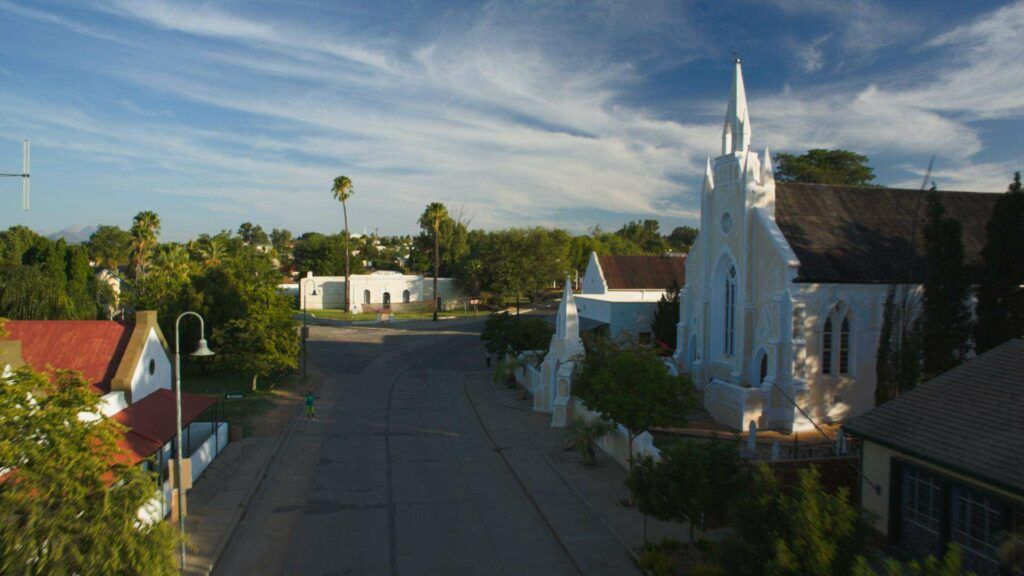History of Clanwilliam
- Province; Western Cape
- Coordinates 32°10′43″S 18°53′28″E
- Area 15.27 km2
- District: West Coast
- Municipality Cedarberg
:
Clanwilliam was established in 1806, it used to be called Jan Disselsvlei. It is located at the confluence of the Olifants River and Jan Dissels Rivers on the Western slopes of the Cedarberg mountains. The town was named after Sir William Cloete, the then Governor of the Cape Colony. The settlement initially served as a strategic stopover for travellers along the route between the Western Cape and the northern regions of South Africa.
Jan Dissel was a botanist who worked in the area. When British settlers arrived in the Cape in 1820, some Irish families led by William Parker headed to the Jan Dissels River. Many of them abandoned their farms. Charles Fryer, a descendant of those who stayed was the first mayor when the town became an independent municipality in 1901.
The area has been a magnet for botanists and in the 1930s Dr. Pieter Le Fras Nortier, a District Surgeon and keen botanist, began experimenting with the cultivation of rooibos tea. He recognized the commercial potential of this plant and he cultivated the first rooibos plants at his farms, Eastside and Klein Kliphuis. His work helped establish rooibos as a major agricultural product for the region. Rooibos is still grown and harvested in the area today and has gained international recognition for its health benefits.
The local Velskoen factory produces 50,000 hand-finished shoes in 10 styles and 20 different colours.
The license plate prefix in Clanwilliam is CAR and the postal code is 8135
WEATHER IN CLANWILLIAM TODAY
see all listings in Clanwilliam
Things to do and see in Clanwilliam
- Ou Tronk Museum
- The Cederberg agricultural show is in April
- The Clanwilliam wildflower show in September
- 17 km outside Clanwilliam driving towards Wupperthal is the grave of C.L. Leipoldt, well-known pediatrician, botanist, cook, and poet
- Clanwilliam Expo– Annual Agricultural Show-083 382 1888
- St John’s church completed in 1866 was designed by Sophia Gray, wife of Robert Gray bishop of Cape Town.It was built to serve the descendants of 1820 settlers in the district
- The Dutch Reformed church was built in 1864 and was designed by Carl Otto Hager.
- Take a guided walking tour
- Clanwilliam Parkrun Graafwaterweg 079 116 9497 velskoendraai@parkrun.com
- Brand see Berg pass
- Witelskloof pass
- Uitkyk Pass
- Maalgat hike
- The Ramskop Wildflower Garden, there are 350 species of cultivated wildflowers. There is also a Tea Garden open in August and September Tel 027-482-2024.
Useful Numbers
- Police– 027 482 8181
- Fire: 027 482 1775
- Municipality; 027 482 8000
- Water; 027 482 8600
- Electricity: 027 482 8600
- Ambulance: 10177/027 482 2576
- Closest Hospital-027 482 2166
- Clinic-027 482 1692
- Pharmacy;027 482 1226
- Library – 027 482 8013
- Post office-027 482 1112
- SPCA: Clanwilliam animal welfare 027 482 2333/ 082 264 5122.
- Schools:
Sederberg Primary School-027 482 1014
Clanwilliam Secondary School – 0274821708
- Museum; Ou Tronk Museum – 073 613 8443
- Veterinarian – Dr. Degenaar – 082 890 1181
- Tourism; (0)27 482 2024
Clanwilliam https://www.cederberg.com/cederberg-accommodation-4.php
Towns in the Cederberg district include: Citrusdal; Clanwilliam; Elands Bay; Graafwater; Lamberts Bay; Porterville; Redlinghuys; and Wupperthal



